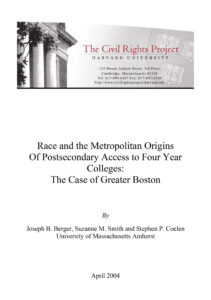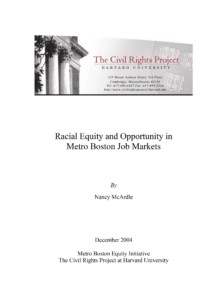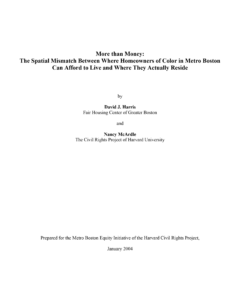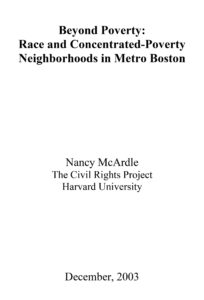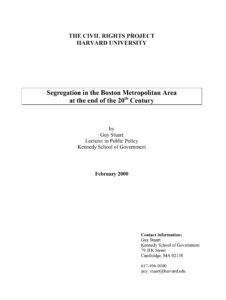Executive Summary
Even as we commemorate the fiftieth anniversary of the landmark Brown vs. Board of Education Supreme Court decision, in which “separate” was deemed “inherently unequal,” and the thirtieth anniversary of the Boston school desegregation order, school segregation and its associated unequal opportunities persist and are increasingly metropolitan-wide in scope. In many ways, metro Boston provides an interesting example of the dynamics of segregation. Since the 1970s, the City of Boston has been the center of attention for desegregation efforts in the urban North. Boston’s urban desegregation experience was, in important respects, the nation’s worst, due to a unique level of violence and political polarization in the city. However, two of the region’s most important demographic trends: the continued outward movement of the population to the suburbs and the rapid growth of multiple racial and ethnic population groups–particularly in urbanized satellite cities outside Boston–suggest that the Boston model may no longer be the most relevant. It is notable that the most recent major desegregation battle occurred in the satellite city of Lynn, where the use of race in school assignments was contested in the federal district court in Comfort v. Lynn School Committee. In upholding the use of race to maintain racially and ethnically diverse schools, this decision cited detailed local demographic and educational research on the value of integration for education.
We need to look beyond the much-maligned Boston Public School experience, consider the real successes in some metro communities such as Lynn, and develop new policies to insure equity and opportunity for all children across the whole metropolitan area. The Boston metropolitan area is overwhelmingly white and suburban. Of the 767,601 students attending 1,457 public schools in 2001-02, approximately 76 percent of the students were non-Latino white, ten percent were Latino, nine percent black, and five percent Asian. Seven out of every ten students attended schools in the suburbs. By contrast, the Boston Public Schools enrolled just eight percent of public school students in the metropolitan area and only two percent of white students. White students in Metro Boston attend very segregated schools, and over the 1990s, school segregation remained at high levels. Seven in ten white students attend schools in the outer suburbs—schools that are over ninety percent white. In contrast, more than three quarters of black and Latino students attend schools in the City of Boston or in one of the urbanized satellite cities. Not only are students segregated by race, they are also highly segregated by language. Latino and Asian English Language Learners (ELLs) are highly isolated and are much more likely to attend schools with significant numbers of Latino and Asian students, respectively, than are English Language Speakers…
The Metro Boston Equity Initiative is devoted to analyzing race relations and racial equity issues not simply in the city of Boston, but across the entire metropolitan region. Although greater Boston still has a large white majority and suburban sectors with very little diversity, immigration of Latinos and Asians is driving the region’s growth, and much of this population increase is taking place well outside of the city limits.
In compliance with the UC Open Access Policy, this report has been made available on eScholarship:



